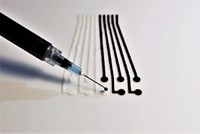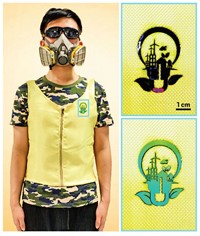Advertisement
Grab your lab coat. Let's get started
Welcome!
Welcome!
Create an account below to get 6 C&EN articles per month, receive newsletters and more - all free.
It seems this is your first time logging in online. Please enter the following information to continue.
As an ACS member you automatically get access to this site. All we need is few more details to create your reading experience.
Not you? Sign in with a different account.
Not you? Sign in with a different account.
ERROR 1
ERROR 1
ERROR 2
ERROR 2
ERROR 2
ERROR 2
ERROR 2
Password and Confirm password must match.
If you have an ACS member number, please enter it here so we can link this account to your membership. (optional)
ERROR 2
ACS values your privacy. By submitting your information, you are gaining access to C&EN and subscribing to our weekly newsletter. We use the information you provide to make your reading experience better, and we will never sell your data to third party members.
Materials
Yarn Gets Smart With Nanotube Coating
Coating common cotton thread with carbon nanotubes provides a simple route to electronic textiles that could be used as medical sensors
by Bethany Halford
November 24, 2008
| A version of this story appeared in
Volume 86, Issue 47

Monitoring physiological functions could someday be as easy as slipping on a T-shirt, thanks to a new method for making smart fabrics. By coating common cotton thread with carbon nanotubes, researchers have developed a simple and inexpensive route to electronic textiles (Nano Lett., DOI: 10.1021/nl801495p). The team, led by Nicholas A. Kotov of the University of Michigan, Ann Arbor, and Chuanlai Xu of China's Jiangnan University, prepared the intelligent yarn by dipping threads in a polyelectrolyte solution containing carbon nanotubes and then letting them dry. The technique could easily be integrated into existing fabric processing, the authors note. The nanotube coating makes the threads conductive enough to allow a battery connected to the threads to power a light-emitting diode. And when the team used the protein-stabilizing electrolyte poly(sodium 4-styrene sulfonate) and added the antibody for human serum albumin to the solution, a change in the coated threads' conductivity indicated the presence of the key blood protein albumin. A garment made with these threads could have military applications, such as detecting how badly a person has been injured in a blast.






Join the conversation
Contact the reporter
Submit a Letter to the Editor for publication
Engage with us on Twitter